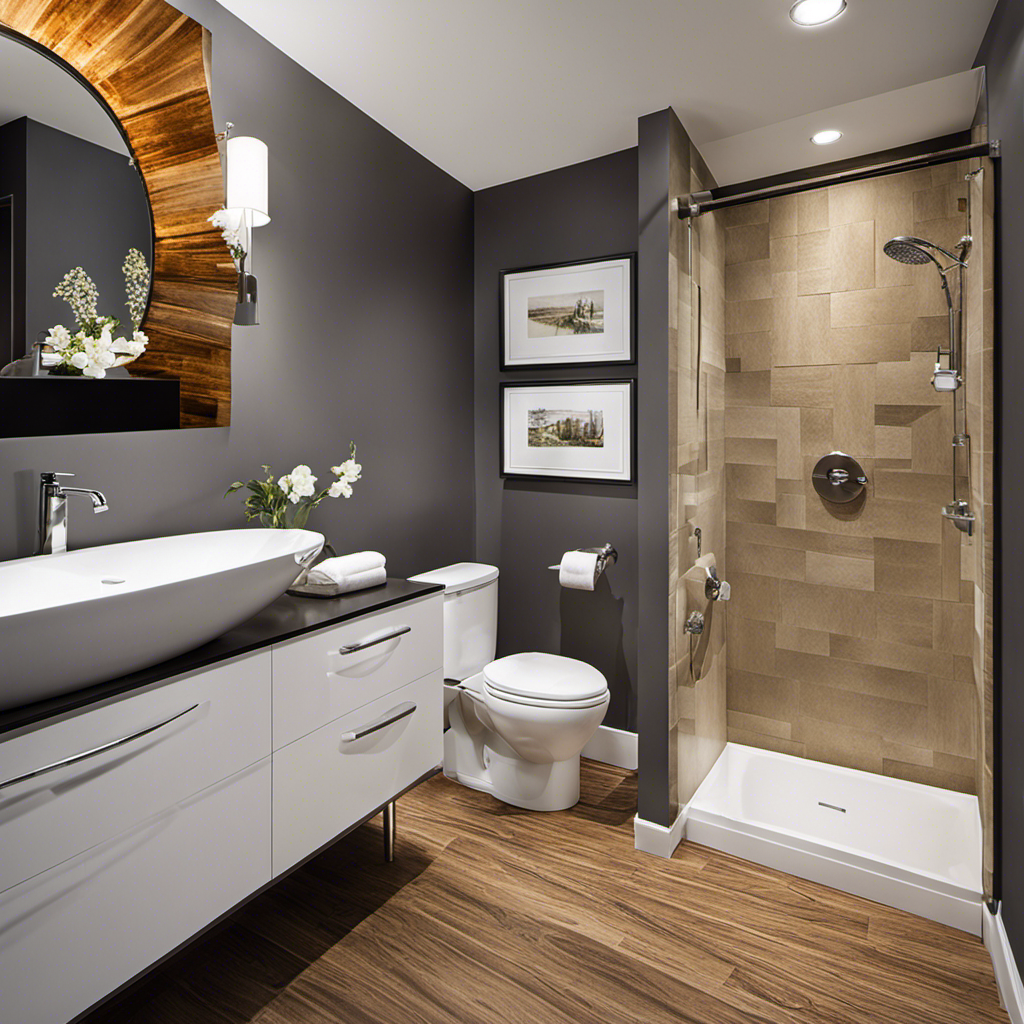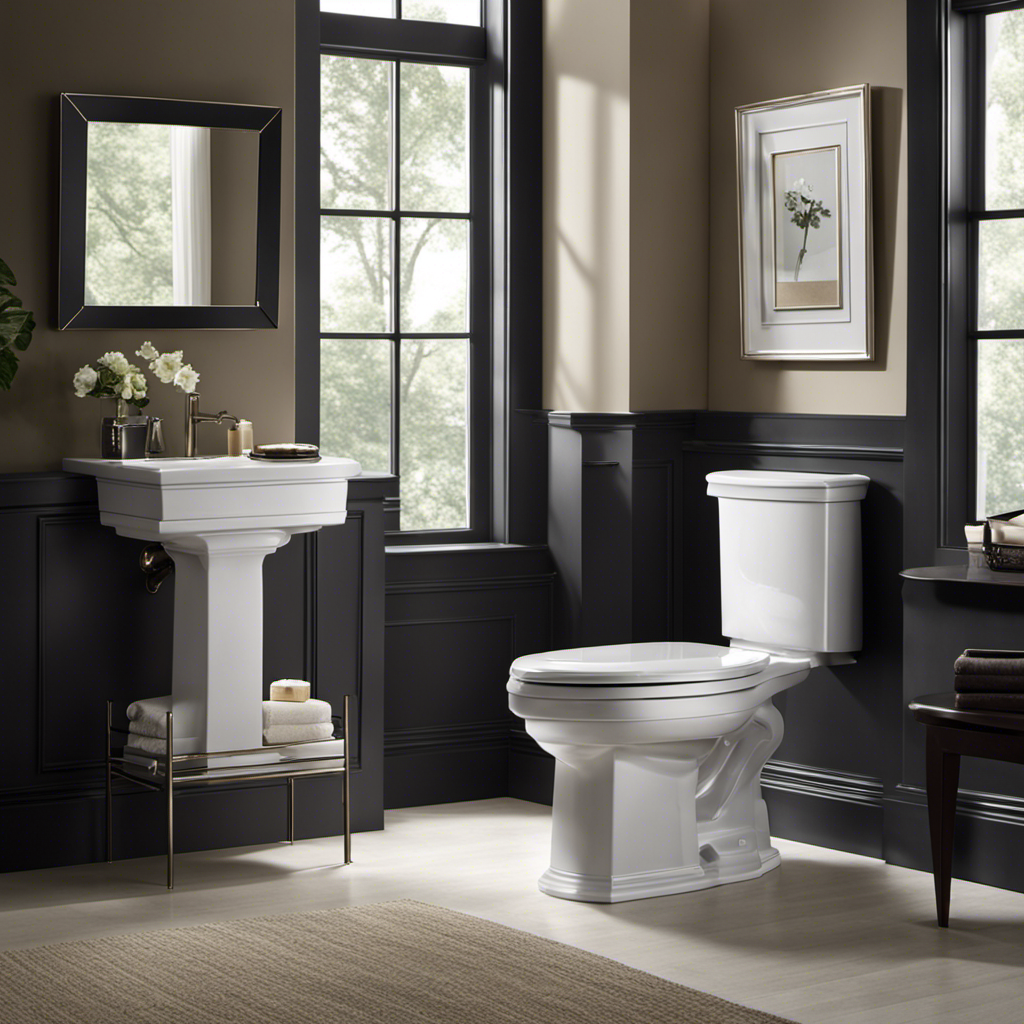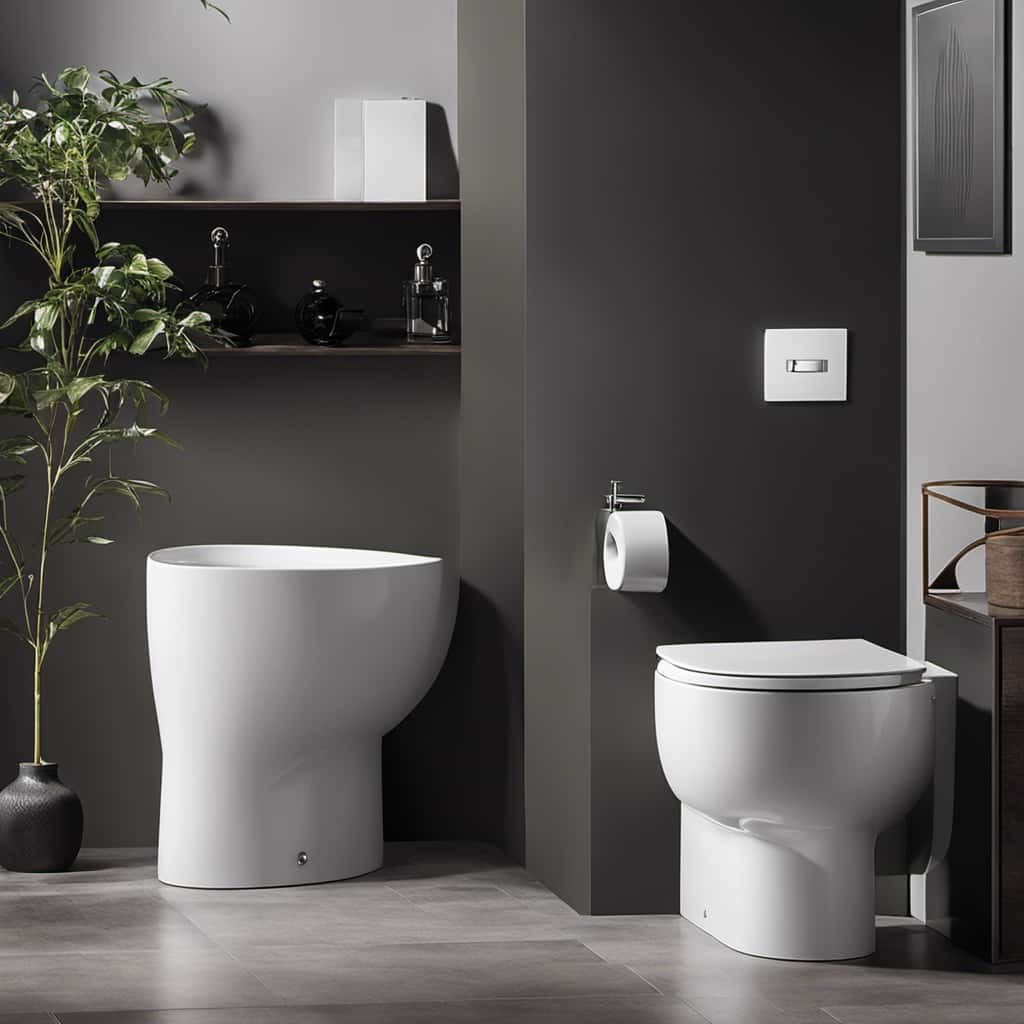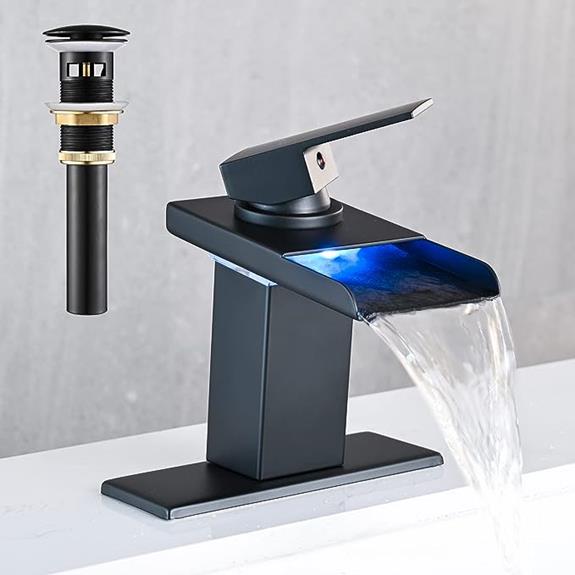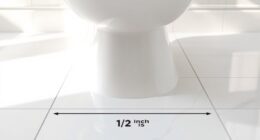Hey there! Let’s talk about the great hygiene debate: bidets vs. toilet paper.
We all know the importance of staying clean and fresh, but which method is truly the best? Bidets have gained popularity for their hygienic and eco-friendly features, while toilet paper remains a staple in most households.
In this article, we’ll explore the benefits and drawbacks of both options, consider the environmental impact, and weigh the costs.
So, whether you’re Team Bidet or Team Toilet Paper, let’s dive into the hygiene showdown and find the best solution for you.
Key Takeaways
- Bidets provide a cleaner and more hygienic experience compared to toilet paper.
- Using both bidets and toilet paper together ensures thorough cleanliness.
- Bidets offer a hands-free method of washing, reducing the spread of germs.
- Bidets are a more sustainable choice, considering water usage and environmental impact.
The Hygiene Benefits of Bidets
I personally find bidets to be a more hygienic option compared to toilet paper because they offer a hands-free method of washing, reducing the spread of germs. Bidets provide a higher level of cleanliness and eliminate the need for touching dirty objects like toilet paper. When it comes to hygiene, bidets take the lead.
But how do bidets compare to wet wipes? Wet wipes may seem like a convenient option, but they can actually cause skin irritation and even lead to infections. On the other hand, bidets use water to cleanse, which is gentle and soothing to the skin. This makes bidets a healthier choice for maintaining proper hygiene.
The Pros and Cons of Toilet Paper
Using toilet paper has its advantages, such as its affordability and convenience. However, it is important to consider the sustainability of toilet paper and explore alternatives.
Toilet paper is made from trees, which contributes to deforestation and habitat destruction. Additionally, the production process requires a significant amount of water and energy, further impacting the environment.
Alternatives to toilet paper include bidets, which use water to clean instead of paper. Bidets are more sustainable as they reduce the need for toilet paper and minimize waste.
Other alternatives include reusable cloth wipes or bamboo toilet paper, which is more eco-friendly than traditional toilet paper.
Considering the environmental impact of toilet paper, exploring and adopting these alternatives can contribute to a more sustainable lifestyle.
Environmental Considerations: Bidets Vs. Toilet Paper
Considering the environmental impact, it is important to compare the sustainability of bidets and toilet paper. When it comes to water usage comparison, bidets are the clear winner. An average bidet consumes about 1.5 gallons of water per week, while it takes about 35-40 gallons of water to produce just one roll of toilet paper. This stark difference in water usage makes bidets a more environmentally friendly option. Additionally, bidets have a lower carbon footprint compared to toilet paper. The manufacturing and transportation of toilet paper contribute to carbon emissions, whereas bidets do not. Taking into account both water usage and carbon footprint analysis, bidets are the more sustainable choice for the environment.
| Bidets | Toilet Paper |
|---|---|
| Uses less water | Requires more water for production |
| Lower carbon footprint | Contributes to carbon emissions |
| More sustainable | Less sustainable |
The Cost Analysis: Bidets Vs. Toilet Paper
Switching to bidets can save money in the long run due to the elimination of regular purchases of toilet paper. When comparing the cost of bidets and toilet paper, bidets may have a higher initial investment, but they prove to be more cost-effective over time.
The economics of bidets versus toilet paper are clear: bidets eliminate the need for constantly buying toilet paper, which can add up to significant savings in the long term. While bidets may have a higher upfront cost, this expense can be recouped in less than a year.
Additionally, bidets are now available at affordable prices, making them a viable option for those looking to save money while maintaining cleanliness and hygiene. In the cost comparison between bidets and toilet paper, bidets emerge as the more economical choice.
Making the Hygienic Choice: Bidets or Toilet Paper?
I prefer bidets because they provide a cleaner and more hygienic experience compared to toilet paper. Proper bidet usage is important for maintaining personal hygiene.
Bidets offer a hands-free method of washing, reducing the spread of germs. Some bidet brands even have a self-cleaning feature for the nozzle, ensuring regular cleanliness. By using bidets, we eliminate the need for touching dirty objects like toilet paper, further enhancing our hygiene habits.
Bidets provide a higher level of cleanliness compared to toilet paper alone. Incorporating bidets into our personal hygiene routine can have a significant impact on our overall cleanliness and well-being.
Frequently Asked Questions
Are Bidets Suitable for All Ages and Body Types?
Bidets are suitable for all ages and body types. Bidets for children provide gentle cleaning, and bidet benefits for people with disabilities include improved hygiene and independence. They offer a hygienic alternative to toilet paper.
Can Bidets Be Installed in All Types of Bathrooms?
Bidets can be installed in most types of bathrooms, but there may be challenges depending on the existing plumbing. Despite this, the benefits of bidets for the environment, such as water conservation, make them a worthwhile investment.
Are Bidets Safe to Use for Individuals With Certain Medical Conditions?
Bidets are safe to use for individuals with certain medical conditions. They are gentle on the skin, making them suitable for those with skin sensitivity. Additionally, bidets can be used during pregnancy, providing a hygienic alternative to toilet paper.
How Long Does It Take to Get Used to Using a Bidet?
Having used a bidet for a while, I can confidently say that it doesn’t take long to get used to it. The benefits for the environment and cost effectiveness make the transition worth it.
Are Bidets More Hygienic for Women Compared to Men?
Bidets are a cost-effective solution for better personal hygiene. They provide a higher level of cleanliness compared to toilet paper and are more eco-friendly, using less water and reducing carbon emissions.
Conclusion
In conclusion, the hygiene showdown between bidets and toilet paper has revealed some interesting insights.
Like characters in a story, bidets and toilet paper each have their strengths and weaknesses. Bidets offer a hands-free and germ-reducing method of cleaning, while toilet paper provides the final touch.
Environmental considerations tip the scales in favor of bidets, as they are more sustainable in the long run. And when it comes to cost, bidets may have a higher initial price, but they prove to be a wise investment over time.
So, make the hygienic choice and embrace the power of bidets.
